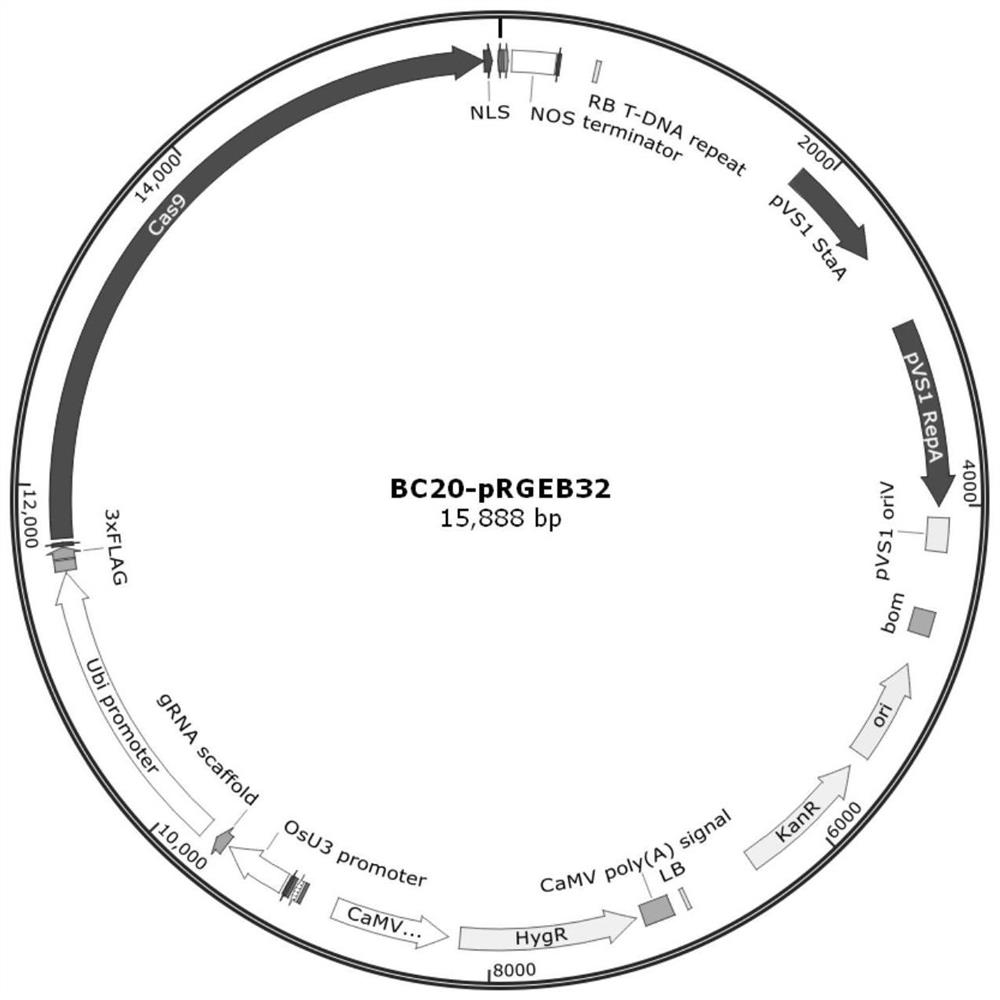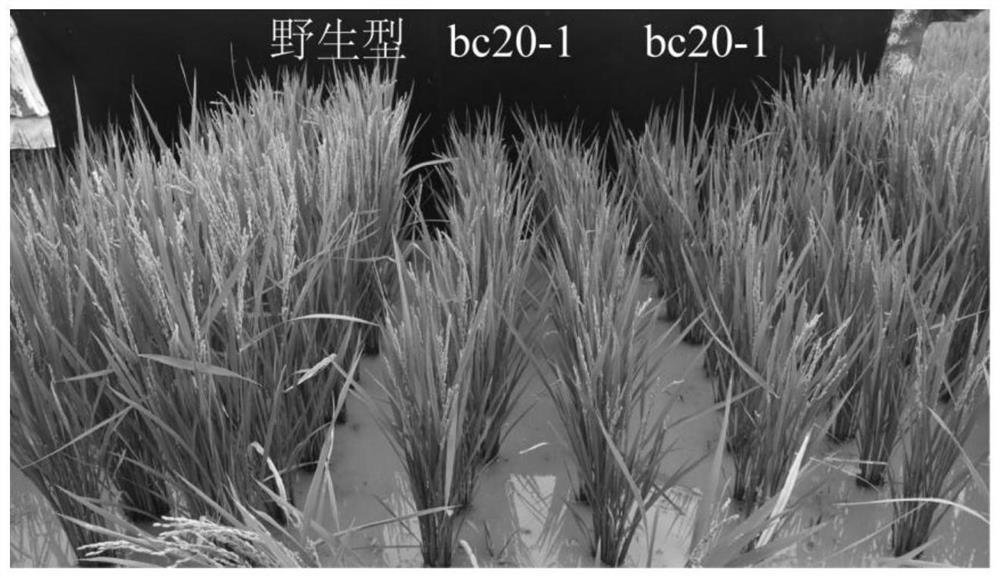Rice BC20 mutant gene, recombinant vector, transformant and application of rice BC20 mutant gene, recombinant vector and transformant in preparation of rice brittle stem mutant
A technology of mutant gene and recombinant vector, applied in application, genetic engineering, plant genetic improvement and other directions, can solve the problems of increased lignin content, decreased cellulose content, abnormal cell expansion, etc., to change grain shape, increase crop yield, The effect of improving lodging resistance
- Summary
- Abstract
- Description
- Claims
- Application Information
AI Technical Summary
Problems solved by technology
Method used
Image
Examples
Embodiment 1
[0050] Example 1, the acquisition of rice knockout mutant bc20
[0051] In order to study the function of the rice fragility gene, we used CRISPR Cas9 technology to construct mutants of a large number of rice genes. One of the dwarf mutants caught our attention. The transformed plants of the T0 generation of this mutant were detected by PCR sequencing, and two BC20 mutant materials were screened out, which we named bc20-1 and bc20-2 respectively.
[0052] Among them, the material editing type of mutant bc20-1 is the deletion of CC after the 220th base, and its protein has a frameshift mutation after the 73rd amino acid; the material editing type of mutant bc20-2 is the deletion of the 223rd base to the 336th base Among the 114 bases, the protein has deletion mutations in 38 amino acids between the 75th amino acid and the 112th amino acid.
[0053] The specific method for constructing rice mutant bc20 material by CRISPR Cas9 system is as follows:
[0054] 1. Design sgRNA
...
Embodiment 2
[0087] Example 2, field phenotype observation of wild type and bc20-1 and bc20-2 mutant plants
[0088] In order to observe the phenotypes of rice wild-type plants and bc20-1 and bc20-2 mutant plants under field growth conditions, we conducted an experimental field in Wuhan City, Hubei Province, China (central China, northern China) from June to October 2019 to 2020. subtropical monsoon humid climate) field experiments were carried out, and the test material was T 2 Generation and T 3Generation of homozygous mutant seeds. In each plot, 20 rice seedlings of three kinds of materials were transplanted on the plot of 10 plants in each row, and the distance between the rows and the plants was 20 centimeters. Three plots were planted as biological replicates. In sampling and measurement, boundary rows are excluded. The application of fertilizers, the use of pesticides and all other field management measures are done in the same way.
[0089] The field phenotypes of the wild typ...
Embodiment 3
[0090] Embodiment 3, comparison of wild type and bc20-1 and bc20-2 mutant plant grain type
[0091] We take the field test materials in Example 2 for analysis. The wild-type and mutant bc20-1 and bc20-2 plants at the grain maturity stage were selected, and 5 plants were randomly selected from each of the three plots as biological replicates. After threshing each plant, dry it in the sun. The 1000-grain weight data was obtained using a digital rice seed testing machine (YTS-5D, Gufeng Optoelectronics, China). Then randomly take 10 plump seeds and arrange them neatly and take pictures. The result is as Figure 4 As shown, it can be seen that compared with the wild type, the mutant bc20-1 and bc20-2 plants have little change in rice grain shape and lighter dry grain weight.
PUM
 Login to View More
Login to View More Abstract
Description
Claims
Application Information
 Login to View More
Login to View More - R&D
- Intellectual Property
- Life Sciences
- Materials
- Tech Scout
- Unparalleled Data Quality
- Higher Quality Content
- 60% Fewer Hallucinations
Browse by: Latest US Patents, China's latest patents, Technical Efficacy Thesaurus, Application Domain, Technology Topic, Popular Technical Reports.
© 2025 PatSnap. All rights reserved.Legal|Privacy policy|Modern Slavery Act Transparency Statement|Sitemap|About US| Contact US: help@patsnap.com



